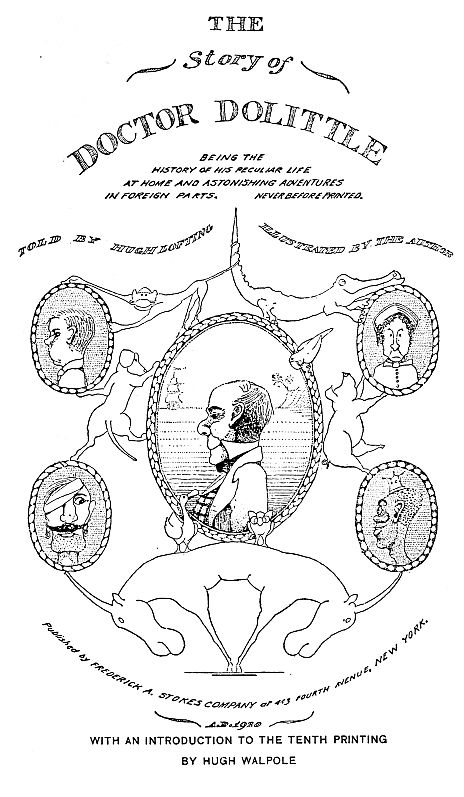The Story of Doctor Dolittle
Hugh Lofting
Introduction
There are some of us now reaching middle age who discover themselves to be lamenting the past in one respect if in none other, that there are no books written now for children comparable with those of thirty years ago.
Voice Reading
I say written for children because the new psychological business of writing about them as though they were small pills or hatched in some especially scientific method is extremely popular today.
Voice Reading
Writing for children rather than about them is very difficult as everybody who has tried it knows.
Voice Reading
It can only be done, I am convinced, by somebody having a great deal of the child in his own outlook and sensibilities.
Voice Reading
Such was the author of "The Little Duke" and "The Dove in the Eagle's Nest," such the author of "A Flatiron for a Farthing," and "The Story of a Short Life." Such, above all, the author of "Alice in Wonderland." Grownups imagine that they can do the trick by adopting baby language and talking down to their very critical audience.
Voice Reading
There never was a greater mistake.
Voice Reading
The imagination of the author must be a child's imagination and yet maturely consistent, so that the White Queen in "Alice," for instance, is seen just as a child would see her, but she continues always herself through all her distressing adventures.
Voice Reading
The supreme touch of the white rabbit pulling on his white gloves as he hastens is again absolutely the child's vision, but the white rabbit as guide and introducer of Alice's adventures belongs to mature grown insight.
Voice Reading
Geniuses are rare and, without being at all an undue praiser of times past, one can say without hesitation that until the appearance of Hugh Lofting, the successor of Miss Yonge, Mrs. Ewing, Mrs. Gatty and Lewis Carroll had not appeared.
Voice Reading
I remember the delight with which some six months ago I picked up the first "Dolittle" book in the Hampshire bookshop at Smith College in Northampton.
Voice Reading
One of Mr. Lofting's pictures was quite enough for me.
Voice Reading
The picture that I lighted upon when I first opened the book was the one of the monkeys making a chain with their arms across the gulf.
Voice Reading
Then I looked further and discovered Bumpo reading fairy stories to himself.
Voice Reading
And then looked again and there was a picture of John Dolittle's house.
Voice Reading
But pictures are not enough although most authors draw so badly that if one of them happens to have the genius for line that Mr. Lofting shows there must be, one feels, something in his writing as well.
Voice Reading
You cannot read the first paragraph of the book, which begins in the right way "Once upon a time" without knowing that Mr. Lofting believes in his story quite as much as he expects you to.
Voice Reading
That is the first essential for a story teller.
Voice Reading
Then you discover as you read on that he has the right eye for the right detail.
Voice Reading
What child-inquiring mind could resist this intriguing sentence to be found on the second page of the book:
Voice Reading
"Besides the gold-fish in the pond at the bottom of his garden, he had rabbits in the pantry, white mice in his piano, a squirrel in the linen closet and a hedgehog in the cellar."
Voice Reading
And then when you read a little further you will discover that the Doctor is not merely a peg on whom to hang exciting and various adventures but that he is himself a man of original and lively character.
Voice Reading
He is a very kindly, generous man, and anyone who has ever written stories will know that it is much more difficult to make kindly, generous characters interesting than unkindly and mean ones.
Voice Reading
